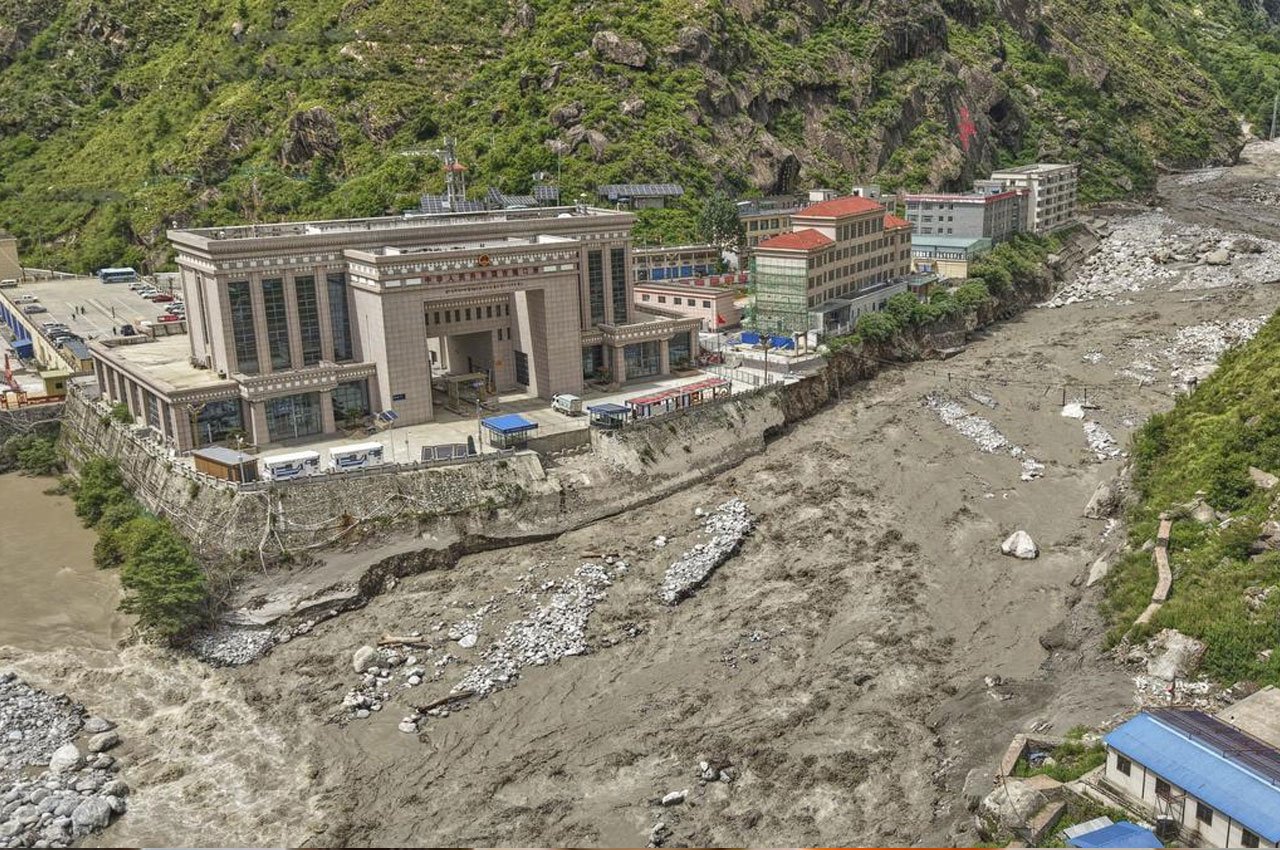A sudden and devastating flood without rain swept through the Rasuwagadhi area along the Nepal–China border on July 8, sharply drawing global attention to the growing danger of glacial lake outburst floods (GLOFs), reported The Hindu. Without any rainfall recorded in the region, a wall of water and debris rushed down the Bhotekoshi River, claiming lives, damaging infrastructure, and exposing a significant climate risk.
The Nepal Department of Hydrology and Meteorology confirmed no precipitation in the affected catchment area, while water-level sensors detected a dramatic surge – from 3.65 m to 5.37 m in under ten minutes. Satellite data and expert analysis pointed to a sudden breach of a supraglacial lake upstream in Tibet – triggering this flash flood, known as a GLOF.
Initial reports value the human cost as at least nine confirmed dead on the Nepal side, with 19 missing – including police personnel – and six Chinese nationals unaccounted for. On the Chinese side, 11 more were reported missing. In total, about 31 individuals remain missing across the border.
Prime Minister KP Sharma Oli personally visited Rasuwagadhi, ordering immediate search and rescue operations. Nearly 300 Nepal Army personnel, alongside police and armed units, were dispatched and more than 150 people were airlifted to safety in Kathmandu. A critical bridge linking the two countries was totally washed away, and state news outlets reported damage to the nearby hydropower facility and an electric vehicle charging station, along with the loss of multiple vehicles.
The incident coincides with the monsoon season, but its true cause lies in climactic change. The International Centre for Integrated Mountain Development (ICIMOD) confirmed via satellite observations that the flood originated from a breaching supraglacial lake north of the Langtang Himal region. Experts warn such GLOFs are increasing at “an unprecedented pace” across the Hindu Kush Himalayan arc.
Historical context shows Nepal has faced around 26 GLOFs since 1977, with eleven crossing from neighbouring Tibetan watersheds. Receding glaciers and warmer atmospheric temperatures have accelerated glacial lake formation and instability. A 2020 survey identified nearly 1,500 glacial lakes in Tibet alone as potential risk zones.
Despite boosting infrastructure investment, Nepal still lacks an integrated early warning system. Only two sensor-based alert systems exist in its Himalayan regions, while cross-border cooperation on disaster risk reduction remains minimal. A recent Green Climate Fund grant of $36.1 million aims to improve mitigation and hazard monitoring, but experts say broader and faster implementation is vital.
The damage extends beyond human casualties. The collapsed Friendship Bridge and destruction near the Rasuwagadhi hydropower plant are symbolic blows to regional trade and energy stability, pressing policymakers to reassess resilience strategies along transboundary rivers.
Experts argue that immediate actions – such as installing early warning systems, reinforcing dams and moraine barriers, and coordinating monitoring among Nepal, India, China, and Bhutan – are essential. Long-term solutions include glacier-lake mapping, community-based education, and embracing nature-based defences like vegetation barriers and controlled lake drainage.
This disaster is the third glacial flood event in the Himalayas between May and June 2025, occurring in Nepal, Pakistan, and Afghanistan. Scientists emphasise this surging pattern demands urgent transnational response and updated climate adaptation plans.
Local villagers described the flood as a “tidal wave of mud” that swept through in mere minutes, leaving little room for warning. Over 150 people were rescued, but many lost homes, vehicles, and even livelihoods in what experts call a grim preview of the hazards ahead.
The Rasuwagadhi flood should serve as a pivotal moment for policymakers and international aid agencies. Recognising the cascading threat posed by Himalayan GLOFs – sometimes occurring with no rainfall – demands urgent investment in monitoring, cross-border coordination, and public preparedness. Only through proactive planning and global cooperation can this “flood without rain” be turned into a turning point.
Photo Credit: The Hindu
For more trending stories click here
Follow us for latest updates:




